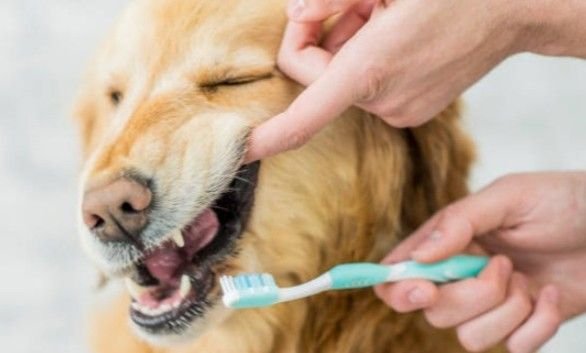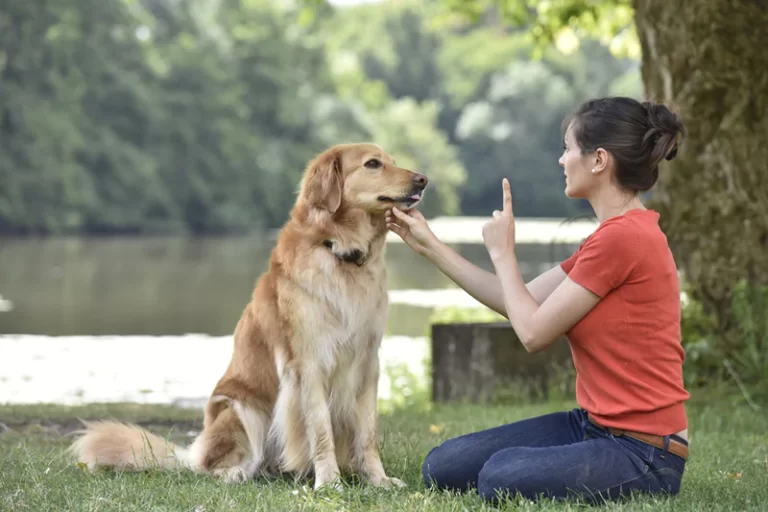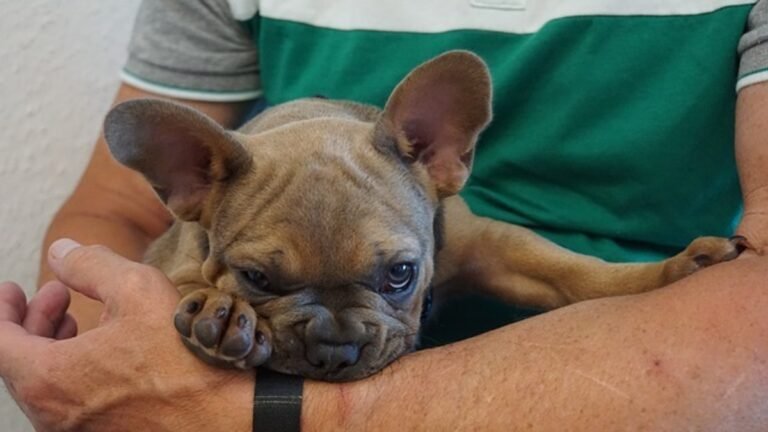Why Owning A Dog Is A Better Idea Than A Cat
Why do I prefer dogs over cats?
Your preference for dogs over cats, or vice versa, is a personal choice influenced by various factors. People’s preferences for pets are often shaped by their individual experiences, lifestyle, personality traits, and the specific qualities they value in a companion animal. Here are some common reasons why someone might prefer dogs over cats:
- Social Interaction:
- Dogs are generally known for being social animals that enjoy interaction and companionship. If you prefer a pet that is highly social, affectionate, and enjoys spending time with you, a dog might be a better fit.
- Loyalty and Companionship:
- Dogs are often praised for their loyalty and strong bond with their owners. Many dog owners appreciate the companionship and sense of loyalty that dogs provide.
- Activity Level:
- Dogs tend to be more active than cats, and they often enjoy outdoor activities, walks, and playtime. If you have an active lifestyle and enjoy engaging in physical activities with a pet, a dog may be a better match.
- Trainability:
- Dogs are known for their trainability and ability to learn commands. If you enjoy training and teaching tricks to your pet, you might find dogs to be more responsive to training than cats.
- Protection:
- Dogs are often considered protective and can provide a sense of security. Many people appreciate having a pet that can serve as a watchdog and provide a level of protection.
- Diverse Breeds and Sizes:
- The wide variety of dog breeds allows individuals to choose a pet that fits their lifestyle, whether it’s a small lap dog, an active working dog, or a larger protective breed.
- Playfulness:
- Dogs are generally known for their playful nature. If you enjoy interactive play and games with your pet, a dog’s playful behavior might be more appealing to you.
It’s important to note that personal preferences for pets are highly subjective, and many people have strong attachments to both dogs and cats. Some individuals may prefer the independent and low-maintenance nature of cats, while others appreciate the companionship and energetic qualities of dogs.
Ultimately, the choice between dogs and cats is a matter of personal preference, and both types of pets can bring joy, companionship, and fulfillment to their owners.
Are dogs better than cats as house pets?
The choice between dogs and cats as house pets depends on individual preferences, lifestyle, and the specific qualities someone values in a companion animal. Both dogs and cats can make wonderful pets, and what might be considered “better” often comes down to personal preferences. Here are some factors to consider for both dogs and cats:
Dogs:
- Companionship and Loyalty:
- Dogs are known for their loyalty and strong bond with their owners. They often seek companionship and can be very attentive to their family members.
- Activity Level:
- Dogs generally require regular exercise and outdoor activities. If you enjoy being active and want a companion for walks, runs, or other outdoor adventures, a dog might be a good fit.
- Trainability:
- Dogs can be trained to follow commands, perform tricks, and engage in various activities. Many people appreciate the trainability and eagerness to please that dogs often exhibit.
- Guarding and Protection:
- Dogs, especially certain breeds, can provide a sense of security and protection. They may serve as watchdogs and deter potential intruders.
Cats:
- Independence:
- Cats are often more independent than dogs and can entertain themselves for longer periods. This can be appealing to individuals with busy lifestyles or those who appreciate a pet with lower maintenance needs.
- Low Maintenance:
- Cats are generally more self-sufficient when it comes to grooming, and they often use a litter box for their bathroom needs. This can make them lower maintenance compared to dogs, especially in terms of outdoor activities.
- Affection on Their Terms:
- While cats can be affectionate, they often express it on their terms. Some people appreciate the more independent and subtle nature of cat companionship.
- Space Requirements:
- Cats are often more adaptable to smaller living spaces, making them suitable for apartment living or homes with limited outdoor access.
Ultimately, the “better” choice depends on your preferences, lifestyle, and what you are looking for in a pet. It’s important to consider factors such as the time and energy you can dedicate to your pet, your living situation, and the type of companionship you desire. Some individuals may find that they prefer one species over the other, while others enjoy the unique qualities of both dogs and cats.
Why are dogs more loyal than cats?
The perception that dogs are more loyal than cats is a common stereotype, but it’s important to note that individual behaviors can vary widely among both dogs and cats. Loyalty is a complex trait, and the expression of loyalty can differ among individual animals, regardless of their species. Here are some factors that contribute to the perception of dogs being more loyal:
Domestication and Evolution:
- Dogs have been domesticated by humans for thousands of years, and their evolution has been closely intertwined with human society. This long history of coexistence has led to strong social bonds and loyalty between dogs and humans.
Pack Mentality:
- Dogs, as descendants of wolves, often exhibit pack behavior. This can translate into strong loyalty to their human family, which they see as part of their pack. In a pack structure, loyalty is crucial for cooperation and survival.
Dependency on Humans:
- Dogs are typically more dependent on humans for care, food, and social interaction compared to cats. This dependency can contribute to a strong bond and loyalty to their human caregivers.
Training and Obedience:
- Dogs are known for their trainability and willingness to follow commands. The ability to train dogs to perform various tasks or respond to cues can create a sense of loyalty as they seek to please their owners.
Expressiveness:
- Dogs are often more expressive in their emotions, making their loyalty more visible. They may show excitement, joy, and affection through tail wagging, licking, and other behaviors, which can be interpreted as signs of loyalty.
It’s important to recognize that cats can also form strong bonds with their human companions and exhibit loyalty in their own ways. Cats may show affection through purring, head-butting, or sitting on their owners’ laps. The perception of cats as less loyal may stem from their more independent nature and subtle ways of expressing affection.
Ultimately, loyalty is an individual trait that varies among animals, regardless of their species. Dogs and cats can both form deep and meaningful connections with their human caregivers, and the level of loyalty often depends on the individual animal’s personality, experiences, and the quality of the relationship with their owner.
Why are dog owners happier than cat owners?
The idea that dog owners are happier than cat owners or vice versa is a subjective and complex topic, and it’s essential to recognize that individual experiences and preferences vary widely. Happiness and fulfillment derived from pet ownership depend on various factors, including personal preferences, lifestyle, and the quality of the bond between the owner and their pet. Here are some factors that might contribute to different perceptions:
Companionship and Social Interaction:
- Dogs are generally known for their sociable and affectionate nature. Dog owners may experience increased opportunities for social interaction and outdoor activities due to the need for walks and exercise. For individuals who value this type of companionship and social engagement, owning a dog may contribute to happiness.
Physical Activity:
- Dog ownership often involves regular walks, playtime, and outdoor activities. The physical activity associated with caring for a dog can contribute to a more active lifestyle, which is known to have positive effects on mental well-being.
Loyalty and Emotional Support:
- Some individuals may perceive dogs as more loyal and emotionally supportive, contributing to a strong human-animal bond. The companionship and loyalty of a dog may positively impact an owner’s emotional well-being.
Independence and Low Maintenance:
- On the other hand, cat owners might appreciate the more independent nature of cats. Cats are generally lower maintenance, requiring less direct attention and physical activity. For individuals who value independence and a lower level of daily care responsibilities, owning a cat might be a source of happiness.
Personal Preferences:
- Personal preferences play a significant role in happiness. Some individuals prefer the playful and interactive nature of dogs, while others appreciate the more laid-back and independent nature of cats. Happiness derived from pet ownership is subjective and depends on alignment with individual preferences.
It’s important to note that the happiness of pet owners is influenced by a combination of factors, and there is no universal formula for happiness in pet ownership. Different people find joy, companionship, and fulfillment in various ways, and the choice between dogs and cats as companions is a matter of personal preference.
Ultimately, the key to a happy and fulfilling relationship with a pet lies in understanding and meeting the needs of both the owner and the animal, regardless of the species. Positive and mutually beneficial interactions contribute to a strong bond and a happy companionship.
Are dogs more intelligent than cats?
Intelligence in animals is a complex and multifaceted trait that can be challenging to measure accurately. Dogs and cats are both intelligent animals, but they demonstrate their intelligence in different ways. Intelligence can be influenced by factors such as problem-solving ability, trainability, adaptability, and social skills. Here are some considerations when comparing the intelligence of dogs and cats:
Dog Intelligence:
- Trainability: Dogs are often highly trainable and can learn a variety of commands and tricks. This trainability has contributed to their historical roles as working animals and companions.
- Social Skills: Dogs are known for their social nature and ability to form strong bonds with humans. They can understand human emotions, follow cues, and work collaboratively with people.
- Problem-Solving: Certain dog breeds are known for their problem-solving abilities. Dogs have been trained for various tasks, including herding, search and rescue, and assistance work, showcasing their adaptability and problem-solving skills.
Cat Intelligence:
- Independence: Cats are often more independent than dogs and may not be as motivated by a desire to please their owners. Their intelligence is sometimes expressed in their ability to navigate their environment and find solutions to challenges on their own.
- Problem-Solving: Cats are natural hunters and exhibit problem-solving skills when stalking prey or figuring out how to reach a high perch. They are known for their agility and resourcefulness.
- Learning by Observation: Cats can learn by observing the behavior of other cats or even humans. They may adapt their actions based on what they see.
It’s important to recognize that intelligence is diverse, and different breeds and individuals within a species may demonstrate varying levels of cognitive abilities. Additionally, the criteria used to measure intelligence may be biased toward certain traits that are more prevalent in one species over the other.
Ultimately, the perceived intelligence of a dog or cat may depend on the specific qualities and behaviors that an owner values. Both dogs and cats can make wonderful companions, each bringing unique qualities to the human-animal bond.
Do dogs really love their owners?
Yes, many dogs form deep emotional bonds with their owners and express affection and love. Dogs are known for their social nature and have evolved alongside humans for thousands of years, which has led to a strong connection between dogs and their human caregivers. Here are some ways dogs demonstrate love and affection:
- Tail Wagging: A wagging tail is a classic sign of a happy and affectionate dog. The speed, height, and direction of the wag can convey different emotions.
- Licking: Dogs may lick their owners as a sign of affection. Licking is a behavior dogs learn as puppies to communicate with their mothers and siblings, and they often carry this behavior into adulthood as a way to show love.
- Cuddling: Many dogs enjoy cuddling with their owners. Physical closeness and warmth create a sense of security and bonding.
- Following and Shadowing: Dogs often follow their owners around, wanting to be close to them. This behavior reflects their desire for companionship and connection.
- Playfulness: Dogs express joy and love through play. Playful behavior, such as bringing toys, running around, and engaging in games, is a way for dogs to bond with their owners.
- Gazing: Dogs may gaze into their owner’s eyes, which can release oxytocin, a hormone associated with bonding and love, in both the dog and the human.
- Excitement and Joy: Dogs exhibit excitement and joy when their owners return home. This can include jumping, wagging tails, and vocalizations.
- Protective Behavior: Dogs often show protective instincts toward their owners, indicating a strong bond and a sense of loyalty.
It’s important to note that individual dogs may express love in unique ways, and their behavior can be influenced by factors such as their personality, breed, and past experiences. Building a strong bond with a dog involves mutual trust, positive interactions, and consistent care. Regular playtime, training, and providing for a dog’s physical and emotional needs contribute to a loving and trusting relationship.
Are cats braver than dogs?
Bravery in animals is a subjective trait that can vary widely among individual cats and dogs. Both species can exhibit acts of bravery, and courage may manifest differently based on the situation, the animal’s personality, and its past experiences. Here are some factors to consider when comparing the perceived bravery of cats and dogs:
Cats:
- Independence: Cats are often known for their independent nature, and their bravery may be expressed through their ability to navigate and explore their environment with confidence.
- Agility: Cats are highly agile and can perform impressive feats such as climbing trees, balancing on narrow surfaces, and executing precise jumps. This agility may contribute to a cat’s perceived bravery in certain situations.
- Territorial Defense: Cats can be fiercely territorial, and they may exhibit bravery when defending their territory from perceived threats.
Dogs:
- Protective Instincts: Many dogs have strong protective instincts, and they may display acts of bravery when it comes to defending their owners, family members, or their home.
- Working Breeds: Certain dog breeds have been selectively bred for specific tasks that require courage and determination. For example, guard dogs, police dogs, and search and rescue dogs often display bravery in their roles.
- Loyalty: Dogs are known for their loyalty to their owners. This loyalty can translate into acts of bravery when a dog perceives that its owner is in danger or distress.
It’s important to recognize that bravery is a complex trait, and animals may react differently to various situations. Additionally, individual differences play a significant role in how bravery is expressed. While some cats may demonstrate fearlessness in certain scenarios, some dogs may exhibit remarkable bravery in other contexts.
Ultimately, the perception of bravery in cats and dogs can be subjective and dependent on the specific circumstances. Both species have unique qualities, and individual variations should be considered when evaluating their behaviors.
Are cats louder than dogs?
In general, cats and dogs have different vocalizations, and it’s challenging to make a broad statement about whether cats are louder than dogs or vice versa. The volume of a pet’s vocalizations can vary widely among individual animals, breeds, and species. Here are some factors to consider:
Cats:
- Meowing: Cats use meowing as a form of communication, and the volume and frequency of meows can vary among individual cats. Some cats are naturally more vocal, while others are quieter.
- Purring: While not necessarily loud, purring is a common sound in content and relaxed cats. The volume of a cat’s purr is generally soft, though it can be audible when the cat is close.
Dogs:
- Barking: Dogs are known for barking, and the volume of barks can vary widely among breeds. Some dogs, especially certain small breeds, may have higher-pitched barks, while larger breeds might have deeper, more resonant barks.
- Howling: Some dog breeds, such as certain hound breeds, are known for howling. Howls can be loud and carry over a distance.
It’s important to note that individual temperament, training, and the specific environment can also influence the vocal behavior of both cats and dogs. Some cats and dogs may be naturally quieter, while others may be more vocal.
Additionally, perceived loudness can be subjective and depend on the listener’s sensitivity to sound. What one person considers loud, another might find tolerable or even endearing.
If you’re considering getting a pet and are concerned about noise levels, it’s a good idea to spend time with individual animals or specific breeds to get a sense of their vocal tendencies. Keep in mind that proper training and socialization can also influence a pet’s behavior, including their vocalizations.
Do dogs obey more than cats?
Dogs and cats have different social structures and communication styles, which can influence their behavior, including their responsiveness to commands. Generally, dogs are more trainable and inclined to follow commands compared to cats. Here are some reasons for these differences:
- Domestication History: Dogs have a longer history of domestication, and selective breeding has played a role in enhancing certain traits, including trainability. Dogs have been bred for various purposes, such as herding, hunting, guarding, and companionship, leading to a range of temperaments and abilities to follow commands.
- Pack Mentality: Dogs, as descendants of wolves, often exhibit a pack mentality. In a pack, there is a social structure with a leader (alpha), and dogs are accustomed to following the leader’s cues. This natural inclination to follow a leader makes them more receptive to training and commands.
- Desire to Please: Many dogs have a strong desire to please their owners. This desire to seek approval and positive reinforcement contributes to their willingness to obey commands.
- Communication Styles: Dogs have evolved to live in close association with humans, and they have developed a communication system that involves understanding human cues, gestures, and vocal commands. This adaptability makes it easier to train dogs in various tasks.
On the other hand, cats have a more independent nature and are less likely to see themselves in a hierarchical relationship with humans. Cats may not be as motivated to please their owners, and their independent behavior can sometimes be misinterpreted as a lack of obedience. However, cats can learn commands and tricks, especially if positive reinforcement is used consistently.
It’s important to note that individual differences play a significant role in behavior, and there are exceptions in both species. Some dogs may be less responsive to training, while certain cats may be more cooperative and trainable. Training methods, consistency, and the bond between the owner and the pet also contribute to the success of obedience training in both dogs and cats.
Who is more powerful cat or dog?
The concept of “power” in the context of cats and dogs is multifaceted and can include various aspects such as physical strength, agility, hunting prowess, and more. Comparing the power of cats and dogs is challenging because both species have evolved with unique traits that suit their respective lifestyles. Here are some considerations:
- Physical Strength:
- In general, dogs come in a wide range of sizes and breeds, some of which are much larger and stronger than most domestic cat breeds. Larger dog breeds, such as Mastiffs or Saint Bernards, can have considerable physical strength. However, many cat breeds are agile and can be powerful in their own right, particularly when it comes to activities like climbing and hunting.
- Agility:
- Cats are known for their agility and flexibility. They are excellent climbers and can navigate through narrow spaces with ease. This agility contributes to their ability to hunt and explore their environment. Dogs, depending on the breed, may also have agility, especially those bred for activities like herding or agility competitions.
- Hunting Skills:
- Cats are natural hunters with sharp claws and teeth. They are skilled at stalking and capturing prey. Dogs, depending on their breed, may have hunting instincts as well. Breeds like Terriers or Hounds are often bred for hunting purposes.
- Adaptability:
- Cats are generally more adaptable to various environments and are known for their ability to land on their feet when falling. Dogs, while adaptable, may have different strengths based on their specific breed traits.
Ultimately, the perception of which species is more “powerful” can depend on the specific context and criteria being considered. Both cats and dogs have unique strengths that have evolved based on their roles in different environments and human companionship. The diversity within each species makes it challenging to make broad generalizations about their relative power. It’s important to appreciate and understand the natural behaviors and characteristics of both cats and dogs, recognizing that each has its own set of strengths and abilities.
Why are cats cheaper than dogs?
The cost of acquiring and caring for a pet can vary based on several factors, and it’s not accurate to universally state that cats are always cheaper than dogs. The costs associated with both cats and dogs depend on various factors, including breed, size, health, living conditions, and the region or country.
Here are some reasons why it might be perceived that cats are sometimes less expensive than dogs:
- Initial Acquisition Cost:
- In many cases, the initial cost of acquiring a cat (adoption or purchase) may be lower than that of a dog. This is influenced by factors such as breed popularity, rarity, and breeder practices.
- Size and Space Requirements:
- Generally, cats are smaller than most dog breeds, and they often require less space. Smaller living spaces may accommodate cats more easily, and this can contribute to a perception of lower associated costs.
- Feeding Costs:
- Cats typically require smaller amounts of food compared to dogs, especially large or giant breeds. This can result in lower ongoing feeding costs for cats.
- Veterinary Care:
- Veterinary care costs can vary widely based on factors like breed, size, and health. Some veterinary procedures, medications, and treatments may be less expensive for cats than for certain dog breeds.
- Grooming Needs:
- While grooming needs vary among individual cats and dogs, some dog breeds require regular professional grooming, which can contribute to higher grooming costs compared to cats.
- Training:
- Training needs and associated costs can vary among individual animals, but in some cases, dogs may require more extensive training than cats, potentially influencing the perceived cost difference.
It’s essential to recognize that these points are generalizations, and there are many exceptions based on individual animals, breeds, and circumstances. Both cats and dogs come with associated costs, including food, veterinary care, grooming, and other supplies.
Regardless of species, potential pet owners should carefully consider the long-term financial commitment and responsibilities associated with pet ownership, including routine veterinary care, vaccinations, spaying or neutering, and providing a proper diet and environment. Additionally, adopting pets from shelters or rescue organizations can be a cost-effective and rewarding way to bring a new furry friend into your home.
Are dogs faster than cats?
In general, dogs are faster than cats. Dogs come in a wide variety of breeds, each with its own size, structure, and speed capabilities. Some dog breeds are specifically bred for speed and agility, such as Greyhounds, Whippets, and Salukis, which are among the fastest dog breeds.
Cats, while agile and capable of bursts of speed, are not generally known for sustained high-speed running like certain dog breeds. However, cats can be incredibly quick and nimble, especially in short bursts or when chasing prey.
It’s important to note that the speed of both dogs and cats can vary among individual animals and breeds. Factors such as size, breed characteristics, and overall fitness can influence their speed and agility. Additionally, the motivation for running, whether it’s play, exercise, or chasing prey, can affect the intensity and duration of their speed.
While some dogs may have higher top speeds, cats are often more agile and adept at navigating through tight spaces, making them effective hunters. Both species have evolved with physical attributes that suit their respective hunting and survival strategies.









